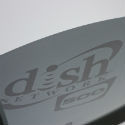
With the T-Mobile/Sprint merger nearing the finish line, Dish Network is pushing ahead with plans to build out a new, virtualized 5G network.
But don't expect a lot of it to be built out in 2020, as Dish has earmarked between $250 million to $500 million toward that effort this year. Despite some analysts' belief that Dish's wireless spend for 2020 is less than anticipated, Dish stressed that capital outlay remains fairly in line with the $500 million to $1 billion it had projected to spend on 5G and NB-IoT initiative over 2019 and 2020. (Dish has paused its NB-IoT buildout.)
For 2020, much of that work will center on RF planning and permitting. "That's the long pole in the tent," Dish Chairman Charlie Ergen said Wednesday on the company's Q4 call. "There's not a lot to build this year."
The pace of Dish's mobile network building activity also depends on the availability of hardware and software that it will use for the 5G network. In the meantime, a seven-year MVNO deal with T-Mobile does give a degree of flexibility to Dish, which, per its FCC commitment, will need to cover 20% of the population in 2022.
Beyond FCC commitments, the clock will be ticking loudly soon after the T-Mobile/Sprint merger closes (expected by April), putting pressure on Dish to complete 100% of its build-out prior to the end of the T-Mobile MVNO agreement.
"Dish doesn't have the luxury of just offloading some traffic… they have to be prepared to offload all of it before the MVNO expires," Craig Moffett, analyst with MoffettNathanson, explained in a research note.
Dish isn't overly concerned. "The good news is we have a pretty big safety net today," Ergen said. "We can take a few more chances; we can experiment a little bit. We can use some providers that maybe aren't household names."
Business plan still under wraps
For now, Dish is keeping its grand business plan for its new mobile business hush-hush, but will likely shed more light on it as it pursues funding for the network it's building.
"The business plan is going to be extraordinary," Ergen declared, promising more "meat on the bones" to help financial backers understand the long-term plan. "The model will probably look better than most have speculated. And the costs will probably be materially less than many people have speculated."
Dish believes it will be able to keep costs in check relative to incumbent mobile networks through a virtualized infrastructure and open RAN approach.
Still, some analysts are skeptical that Dish can build a 5G network for about $10 billion, despite what savings it gets from a virtualized architecture. "Equipment is only 20% or so of the cost of building a network. The rest – labor, tower leases, powering, zoning and siting, and backhaul – doesn’t benefit from virtualization," Moffett wrote, adding that Verizon and AT&T have each spent around $200 billion over the past decade on their respective networks even as they now pursue virtualization initiatives.
Analysts at New Street Research are a bit more bullish, noting that Dish's plan to deploy its spectrum for a 5G network would drive a cost per gigabyte that is 35% to 50% lower than the wireless incumbents. "Altogether, we think DISH is well-positioned to disrupt the wireless marketplace, with incumbents Verizon and AT&T the most at risk," the analysts wrote in a note issued today.
Focus on integration and onboarding of Boost
Even as Dish prepares to move ahead with its 5G network buildout, the initial focus is to prepare the integration and onboarding of Sprint's prepaid Boost business, Tom Cullen, Dish's EVP of corporate development, said.
The transfer of the Boost business (for $1.4 billion) to Dish won't occur precisely in tandem with the closure of the T-Mobile/Sprint deal. Depending on variables, it could happen on the first business day of the month after the consummation of the merger, or 15 days after the newly combined T-Mobile enables Dish to provision subscribers with compatible handsets onto the T-Mobile network.
Dish was noncommittal about whether it believes it will pursue (and also win) more midband spectrum amid the coming auctions in the CBRS and C-Band. "We've always participated [in spectrum auctions]," Ergen said. "We usually don't win much of anything. We don't see that changing."
Related posts:
— Jeff Baumgartner, Senior Editor, Light Reading
About the Author(s)
You May Also Like




.jpg?width=300&auto=webp&quality=80&disable=upscale)







